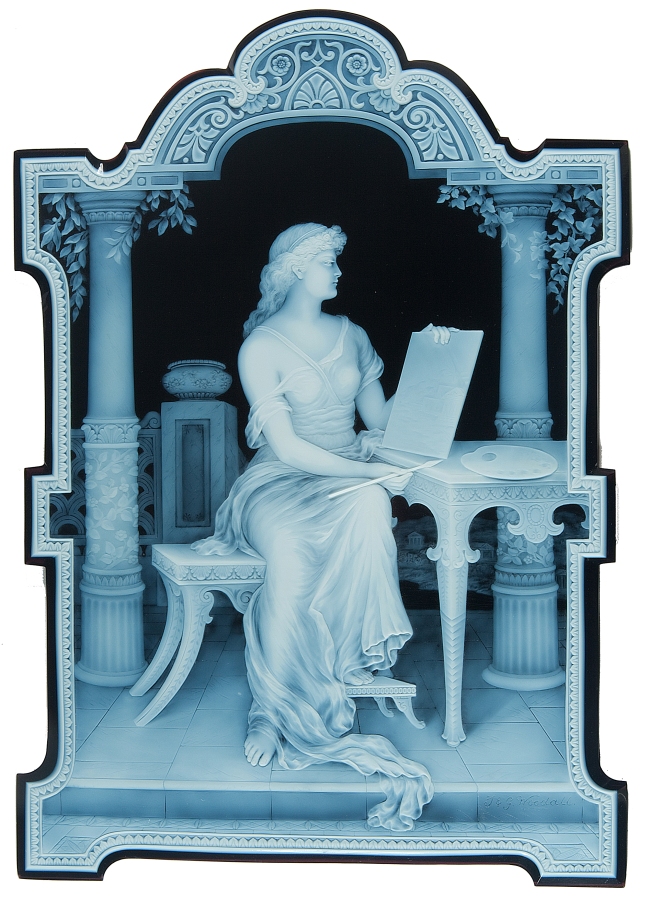Text by Taylor Wilson, Gallery Attendant at the Forsyth Galleries
When someone mentions cameo, the first thing that comes to mind for most is the brooch. However, cameo actually refers to a technique of engraving. Usually, the engraving is done on gemstone so that the outer figure is of one color and the background is of another; however, this process is not limited to two layers. Often times, cameo glass is very colorful.
The creation of cameo glass is just as much an art as the finished product. A blank is first created through a delicate process and then given to a designer. The designer will then draw on the blank with acid resistant material, covering the area that is to remain white. The blank is dipped in hydrofluoric acid which removes the area that was not covered by the designer. Finally, a carver will complete it by refining the design through the use of engraving wheels, acids, and small steel chisels. The refining portion of the process is where true talent becomes visible. Before refining, there is only a rough idea of the intended result. The artist must turn a caterpillar into a butterfly by taking the draft done by acid and use their tools to add the detail.
On the Terrace is a cameo plate done by Thomas and George Woodall in 1895. It is opaque white on a flashed blue layer on plum glass. It is a stunning piece, but the amazing part is the amount of detail that was managed on such a small scale. The piece itself is not very large, measuring only about a foot tall and six inches wide. Yet in that small space, an entire scene was crafted. A woman sits alone painting in what appears to be Greece. Upon first glance, that is all a viewer might notice. However, with a more careful inspection, you begin to see that the background behind the woman is immaculately detailed. The tiniest of buildings are easily recognizable.
Perhaps the most impressive part of the detail is the canvas on which the woman is painting. The engraver managed to create an entire painting on the tiny canvas that isn’t visible at first, or even second, glance. You may even have to adjust your positioning, but when the light hits it just right, the canvas comes to life.
If you would like more information on the process of making cameo glass, you can watch this video from the Corning Museum of Glass: www.cmog.org/video/cameo-glass
